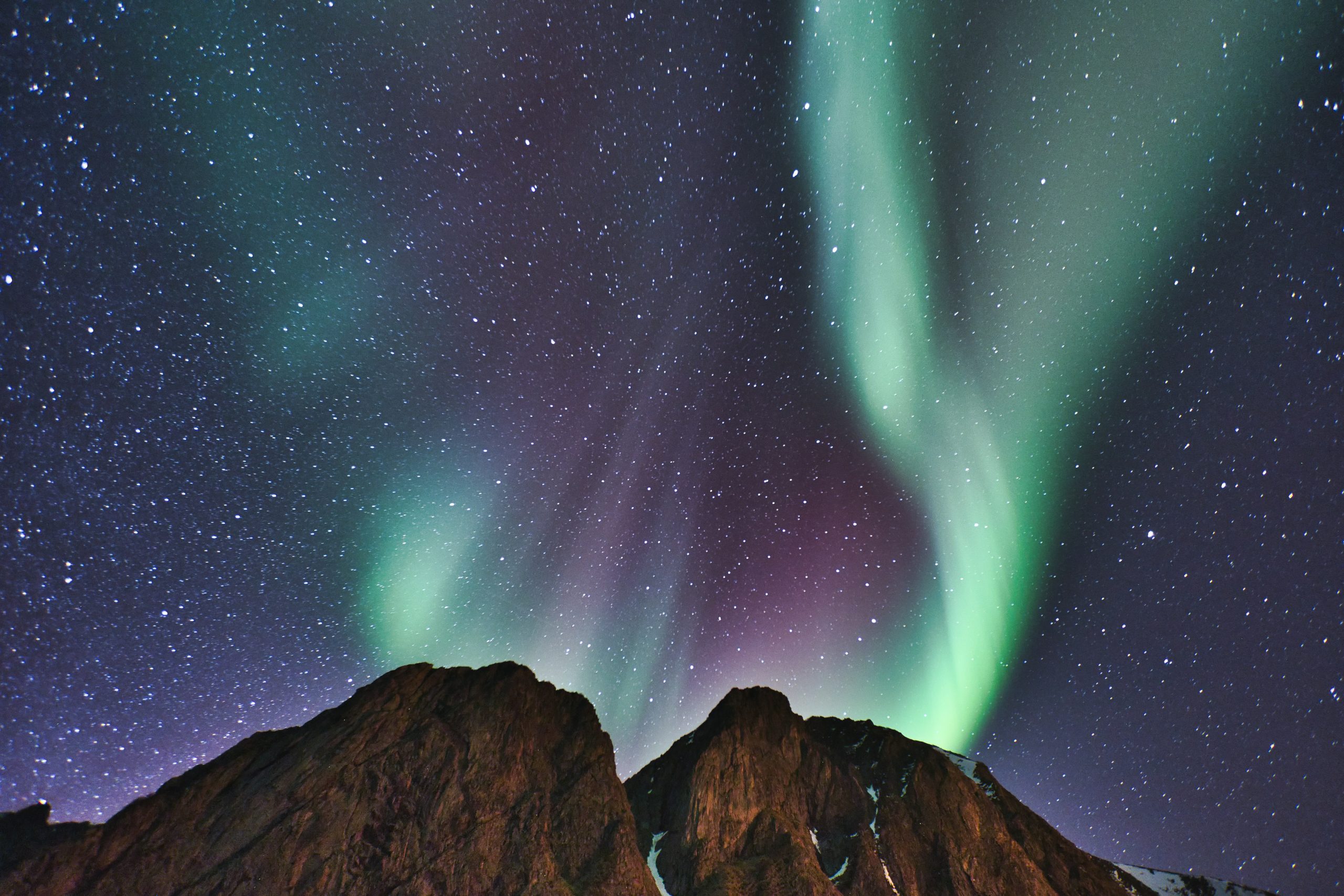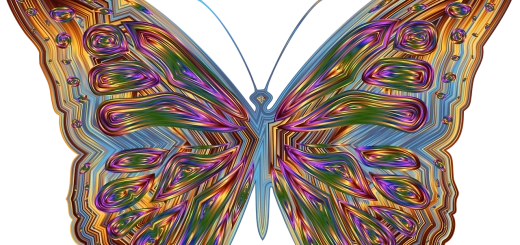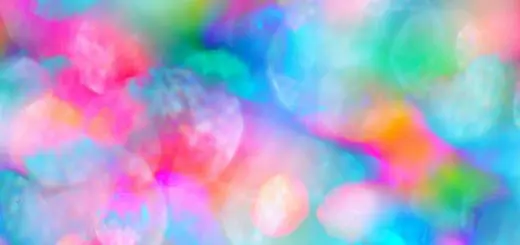How Halloween Celebrations Have Changed Over the Years

Looking for more amazing products? Check out our online store and explore our collection here! Happy shopping!
Before diving in, please note: This post is for informational purposes only. If you’d like to know more about how we approach topics, feel free to check out our friendly Disclaimer Page.
Hey there, amazing readers! 
We’re committed to delivering quality posts, and your support (even just sticking around despite the ads) means everything to us. So, bear with us, and thanks for helping us keep the good vibes rolling. Now, on to the fun stuff!
TRANSLATE BUTTON AT THE END OF THE ARTICLE
A Quick Overview
Halloween, often characterized by costumes, candy, and spooky decorations, has morphed significantly over the centuries.
What began as an ancient festival has transformed into a vibrant celebration that captivates millions globally.
From its Celtic roots to today’s extravagant parties, the evolution of Halloween is a fascinating journey filled with cultural shifts, social changes, and endless creativity.
Let’s dive into how Halloween celebrations have transformed over the years, preserving some traditions while letting new ones blossom.
The Origins of Halloween: A Spooky Start in History
Halloween traces its roots back over 2,000 years to the Celtic festival of Samhain, celebrated on November 1.
It marked the end of the harvest season and the onset of winter, a time often associated with death.
The Celts believed that on the night before Samhain, the boundary between the living and the dead blurred, allowing spirits to roam the earth.
To ward off these spirits, people lit bonfires and wore costumes made of animal skins.
Fast forward to the 8th century, when Pope Gregory III designated November 1 as a day to honor all saints.
This eventually merged with Samhain, leading to the celebration we now know as Halloween.
The name “Halloween” itself comes from “All Hallows’ Eve,” the evening before All Saints’ Day.
As Christian influence spread, Halloween began to lose some of its pagan roots but still retained elements of the ancient customs, particularly the legacy of costumes and revelry.
In early America, Halloween was not widely celebrated, mostly due to a lack of substantial European influence.
However, as immigrants, particularly the Irish fleeing the potato famine, arrived in the U.S. in the 19th century, they brought their Halloween customs with them.
This laid the groundwork for Halloween to become a uniquely American holiday.
From Samhain to Halloween: The Journey of Traditions
The journey from Samhain to modern-day Halloween is marked by the adaptation and evolution of various traditions.
Early Samhain celebrations included lighting fires to honor the deceased and create a connection with the spirit world, while offering food and drink to appease wandering souls.
This ritual morphed over time into the contemporary practice of offering "treats" during Halloween.
Bonfires were a significant part of Samhain, symbolizing a way to ward off evil spirits.
It’s interesting to note that modern-day Halloween parties often replicate this communal aspect, albeit without the flames.
Instead, we gather around bonfire pits, share stories, and revel in the spirit of the season.
Another fascinating transition is the practice of "mischief night," which took root in the 20th century.
Traditionally, this involved playing pranks on neighbors.
While it may seem harmless, it often escalated into vandalism.
Over the years, communities have shifted focus from mischief to celebrating Halloween with costumes, parades, and family-friendly events, showing a clear shift in societal values.
As Halloween became mainstream in the 20th century, it absorbed various customs from around the world.
For instance, the Mexican tradition of Día de los Muertos (Day of the Dead) has influenced how some communities celebrate, promoting respect and remembrance rather than fear of death.
Costumes Through the Ages: Evolution of Dress-Up Fun
Costumes are a hallmark of Halloween, and they’ve come a long way since the days of animal skins.
In the early 1900s, people dressed up as common figures like ghosts, witches, and devils.
Commercially produced costumes first appeared around the 1930s, making it easier for families to partake in the tradition.
During the post-war era, costumes became more elaborate and creative.
The 1950s and 1960s saw a boom in popular culture costumes, with children dressing as characters from cartoons and movies.
Superheroes became iconic, allowing kids to embody their favorite figures.
Today, the range of costumes is vast and often reflects current trends.
From pop culture icons to clever puns, the creativity seems endless.
People don’t just dress up for kids’ parties anymore; adults also embrace costume culture with parties and themed events.
It’s a beautiful way to express individuality and creativity.
I remember one year, my friends and I decided to go as a group, and we chose to dress as characters from a popular TV show.
The costumes got so elaborate that we ended up winning a prize at a local Halloween party!
That’s what Halloween is all about—having fun and celebrating who we are, even if it’s just for one night.
Trick-or-Treating: How a Custom Became a Tradition
Trick-or-treating has become one of Halloween’s most beloved traditions, yet its origins are a mix of ancient customs.
The practice of “souling,” where the poor would go door-to-door during Hallowmas asking for food in exchange for prayers, dates back centuries.
People would offer cakes in return for prayers for their deceased loved ones.
As Halloween gained popularity in the U.S., children began dressing in costumes and visiting homes for treats in the 1920s.
However, it wasn’t until the post-World War II era that trick-or-treating truly took off.
The return of soldiers created a baby boom, and communities began organizing safer, more structured events for kids, leading to the widespread practice we know today.
Interestingly, the idea of “trick” in trick-or-treating originated from the notion that if no treats were offered, a prank would be played in retaliation.
Thankfully, this playful aspect has largely faded away, and today’s focus is on gathering treats and spreading joy.
As a kid, I remember racing through the neighborhood with my friends, our bags getting heavier with every house.
The excitement of ringing doorbells, shouting “trick or treat,” and eagerly anticipating what goodies we’d receive is a joy I hope children today still experience.
The Rise of Halloween Parties: Socializing in Style
Halloween parties have surged in popularity, evolving from simple gatherings into elaborate themed events.
In the early 20th century, Halloween was mostly a children’s holiday, but as adults sought more ways to celebrate, parties became a staple.
The 1980s and 1990s saw a boom in adult Halloween parties, where creativity and fun took center stage.
Themes became a significant part of these celebrations.
Whether it’s a haunted house, a masquerade ball, or a retro costume party, the options are endless.
People go all out with decorations, food, and costumes to create immersive experiences.
This shift reflects broader societal changes, where adults are embracing their playful sides and shedding the notion that Halloween is solely for kids.
I recall attending a Halloween costume party where everyone dressed according to a specific theme—talk about creativity!
From witches to zombies, everyone brought their A-game, and the stories that came out of that night were unforgettable.
The trend has also led to the creation of themed events in bars and clubs, with Halloween dance parties and contests for best costumes becoming commonplace.
These gatherings foster a sense of community, allowing people to connect in a fun, lighthearted atmosphere.
Decorations Over Time: From Simple to Spectacular
Decorating for Halloween has evolved dramatically, moving from simple carved pumpkins to extravagant displays that rival Christmas decorations.
The tradition of using pumpkins, or jack-o’-lanterns, comes from Irish folklore, where turnips were initially used before pumpkins became the popular choice in America.
In the early days, Halloween decorations were minimal, focused mostly on the colors black and orange, along with homemade creations.
As Halloween gained traction in the U.S., commercial decorations began to flood the market in the 1970s and 1980s, featuring plastic ghosts, skeletons, and other spooky items.
Fast forward to today, and Halloween decoration has reached new heights.
Homeowners compete to create the most elaborate displays, sometimes spending hundreds or even thousands of dollars on animatronics, lights, and themed décor.
Websites and social media platforms are filled with tutorials and inspiration for those looking to elevate their Halloween game.
I love driving through neighborhoods in October, spotting houses that are practically transformed into haunted mansions.
The creativity and effort people put into their decorations are genuinely impressive.
It’s a celebration of community spirit, with everyone contributing to the festive atmosphere.
The Influence of Pop Culture on Halloween Celebrations
Pop culture has played a pivotal role in shaping Halloween celebrations, influencing everything from costumes to decorations.
Movies, TV shows, and music have introduced iconic characters and themes that people enthusiastically adopt each year.
Horror films like "Halloween," "The Exorcist," and "Hocus Pocus" have become staples during the season, inspiring costume choices and themed parties.
The rise of social media has also accelerated trends, with viral challenges and memes contributing to what’s “in” for Halloween each year.
Characters from blockbuster films or beloved TV series often dominate costume choices.
For instance, after the release of superhero movies, we see a surge of costumes featuring popular characters—everyone wants to feel like a hero for a night!
The impact of social media can’t be understated either.
Platforms like Instagram and TikTok buzz with creative DIY projects, costume ideas, and party planning tips.
Influencers share their Halloween transformations, inspiring followers to get creative and engage in the festivities.
I remember a few years back when a popular TV show aired its Halloween episode, and suddenly, everyone was dressing up as the characters for parties.
It’s incredible how quickly trends can spread, and it makes celebrating Halloween even more exciting!
Halloween Candies: A Sweet Evolution in Treats
The sweet treats associated with Halloween have come a long way since the first trick-or-treaters knocked on doors.
In the early days, householders would offer homemade goodies like cakes and cookies, but this practice gradually shifted towards store-bought candies for safety and convenience.
The 1950s marked a significant turning point with the introduction of candy bars like Reese’s, Snickers, and M&Ms, which quickly became Halloween staples.
The concept of handing out bite-sized candies also gained traction during this time, allowing kids to collect a variety of treats on their rounds.
Every year, brands compete to be the top choice for trick-or-treaters, leading to the rise of themed candies and seasonal flavors.
The popularity of “fun-sized” candy bars allows kids to enjoy a little taste without overwhelming their bags.
Interestingly, candy prices can spike as Halloween approaches, making it wise to stock up early.
I’ve had years where I waited too long, only to find the store shelves bare!
It’s a lesson learned: get your candy stash before the rush begins.
Beyond traditional chocolates and candies, we’ve seen an increase in unique Halloween treats.
Stores now offer gummy worms, candy corn, and even edible glitter!
It’s all about indulging in the playful spirit of Halloween while satisfying our sweet tooth.
Haunted Houses: From Real Frights to Family Fun
Haunted houses have become synonymous with Halloween, evolving from genuine ghost tours to family-friendly attractions.
In the past, haunted houses were often linked to real historical places, where tales of ghostly encounters became part of the experience.
Today, haunted houses are crafted as entertainment, with elaborate sets and actors bringing frightening scenarios to life.
The aim is to provide thrills without real danger, catering to audiences of all ages.
The rise of professional haunted houses began in the late 20th century, and now they range from small community setups to large-scale, immersive experiences.
Some even incorporate technology, using sound effects and lighting to create a truly spine-chilling atmosphere.
For many, a visit to a haunted house is an annual tradition.
Friends gather to scream, laugh, and share stories of their favorite scares.
I’ll never forget the time my friends dragged me to a haunted house, and I ended up screaming louder than anyone else!
Those memories are what make Halloween so special.
Notably, the growth of “haunted attractions” has led to themed events that include escape rooms and horror-themed mazes.
These experiences allow participants to engage in thrilling narratives while working together to solve challenges.
It’s a brilliant way to celebrate Halloween’s spirit of teamwork!
The Growing Popularity of Halloween Around the World
Halloween has transitioned from a regional celebration in North America to a global phenomenon, with various countries adopting and adapting the traditions.
While it may have originated in the West, its allure has captured the hearts of people worldwide.
Countries such as Mexico have their own versions, like Día de los Muertos, which honors deceased loved ones with vibrant celebrations.
This blending of traditions showcases how cultures can coexist and innovate while celebrating the same themes of remembrance and fun.
In Europe, Halloween is becoming increasingly popular, with events and parties cropping up across the continent.
Countries like the UK and Ireland have embraced trick-or-treating, and cities often hold festivals that highlight local customs alongside Halloween fun.
Social media has also played a role in spreading Halloween enthusiasm.
With influencers promoting Halloween-themed content globally, people are inspired to celebrate, regardless of their cultural background.
This interconnectedness fosters a sense of community in a shared love for spooky festivities.
I’ve met people from different countries who have shared their unique Halloween experiences with me.
Whether it’s a pumpkin-carving competition in Canada or a spooky festival in Japan, it’s fascinating to see how Halloween adapts and thrives everywhere.
Technology’s Role in Modern Halloween Celebrations
We live in a digital age, and technology has transformed how we celebrate Halloween.
From apps that help with party planning to social media platforms showcasing costume ideas, tech has made the festivities more accessible and exciting.
Virtual reality experiences have also entered the Halloween scene, offering immersive haunted house adventures without leaving home.
These innovations allow fans of all ages to engage in frights from the comfort of their couches.
Social media serves as a canvas for sharing Halloween creativity.
Platforms like Instagram and TikTok buzz with DIY decorations, costume inspirations, and even makeup tutorials.
It’s inspiring to see so many people embrace their creativity and share it with the world.
Additionally, the rise of e-commerce has changed how we shop for Halloween.
Every year, online retailers offer extensive selections of costumes, decorations, and treats, making it easy to find exactly what you want.
Who doesn’t love shopping in their pajamas while sipping pumpkin spice lattes?
However, this digital shift has also led to challenges, such as the focus on perfection in Halloween posts.
The pressure to create the “perfect” costume or decoration can sometimes overshadow the fun of simply enjoying the holiday.
It’s essential to remember that Halloween is about joy, creativity, and community—flaws and all!
Future of Halloween: What’s Next for This Festive Day?
As we look to the future, Halloween will undoubtedly continue to evolve.
Cultural shifts, technological advancements, and global influences will play significant roles in shaping how we celebrate.
We may see even more integration of diverse traditions as communities come together to celebrate.
Sustainability is also likely to become a key aspect of Halloween.
As more people prioritize eco-friendly practices, we could see a rise in sustainable decorations, costumes made from recycled materials, and organic candy options.
Additionally, the use of augmented reality (AR) could enhance Halloween experiences, allowing participants to interact with ghostly figures or explore themed environments through their devices.
The possibilities are endless!
Community engagement will remain crucial.
As neighborhoods come together for celebrations, we’ll likely see a continued emphasis on creating safe, inclusive spaces for everyone to enjoy the holiday.
As a lifelong lover of Halloween, I’m excited to see how the holiday will adapt and thrive in the coming years.
It’s a celebration that brings people together in creativity and joy, and that’s something I hope will never change.
Conclusion
The evolution of Halloween celebrations is a testament to our ability to adapt and innovate while holding onto cherished traditions.
From ancient Celtic rituals to modern-day parties, the journey of Halloween is rich with cultural history and societal shifts.
It’s a holiday that invites us to unleash our creativity, connect with others, and embrace the playful spirit of life.
As we step into the future, let’s celebrate the magic of Halloween—one costume, candy, and spooky tale at a time!

The Enlightenment Journey is a remarkable collection of writings authored by a distinguished group of experts in the fields of spirituality, new age, and esoteric knowledge.
This anthology features a diverse assembly of well-experienced authors who bring their profound insights and credible perspectives to the forefront.
Each contributor possesses a wealth of knowledge and wisdom, making them authorities in their respective domains.
Together, they offer readers a transformative journey into the realms of spiritual growth, self-discovery, and esoteric enlightenment.
The Enlightenment Journey is a testament to the collective expertise of these luminaries, providing readers with a rich tapestry of ideas and information to illuminate their spiritual path.
Our Diverse Expertise
While our primary focus is on spirituality and esotericism, we are equally passionate about exploring a wide range of other topics and niches 

To ensure we provide the most accurate and valuable insights, we collaborate with trusted experts in their respective domains 
Our blog originally focused on spirituality and metaphysics, but we’ve since expanded to cover a wide range of niches. Don’t worry—we continue to publish a lot of articles on spirituality! Frequently visit our blog to explore our diverse content and stay tuned for more insightful reads.
Hey there, amazing reader! 
Check out our store here and take a peek at some of our featured products below! Thanks for being awesome!










